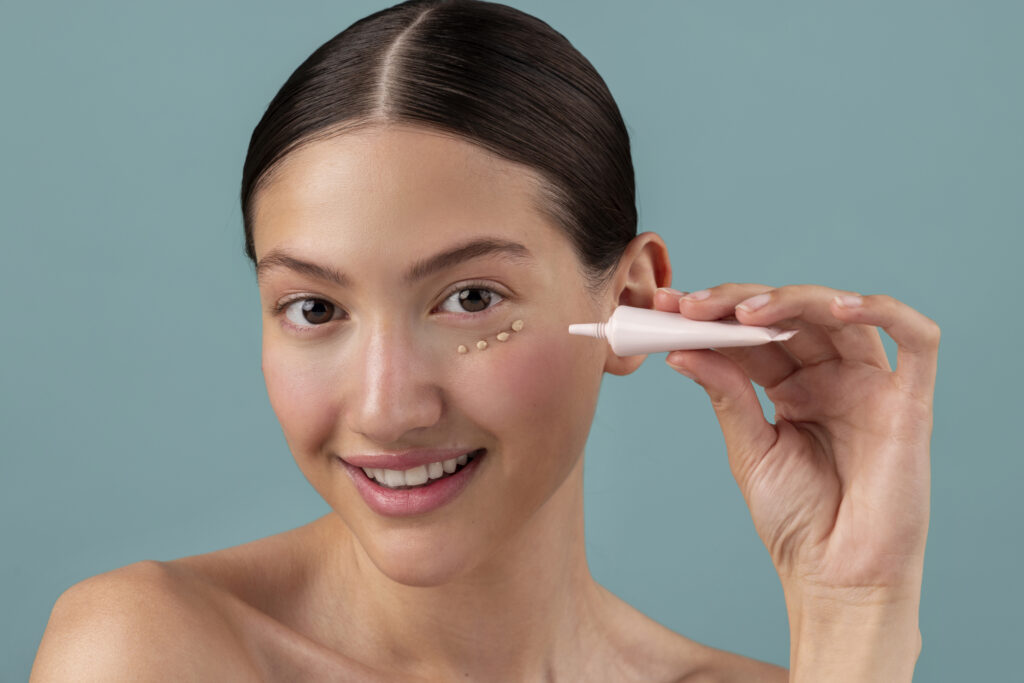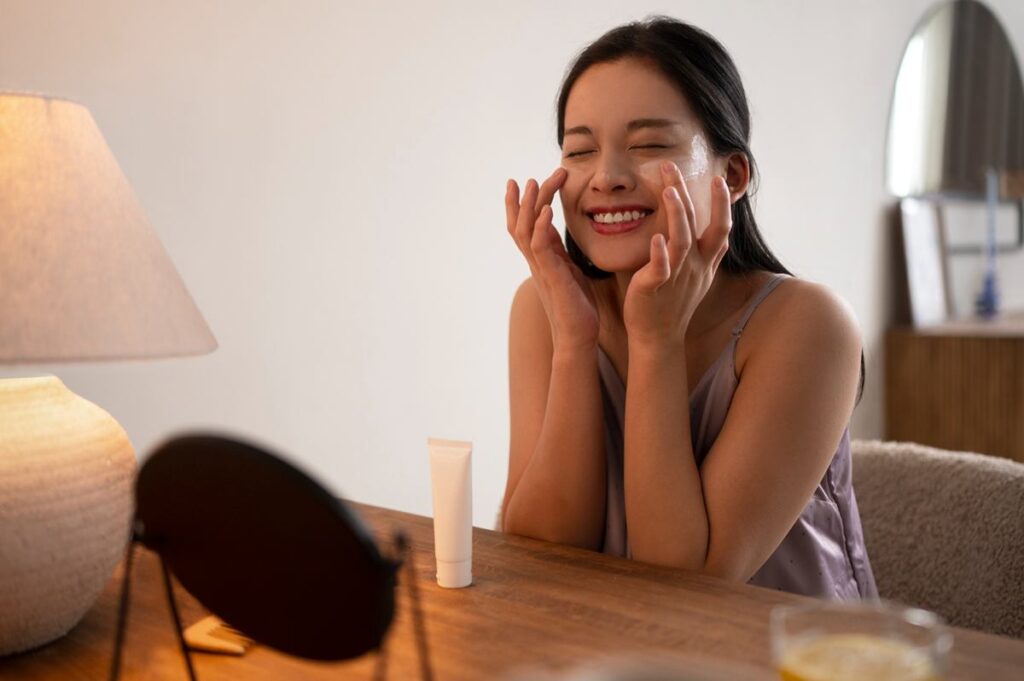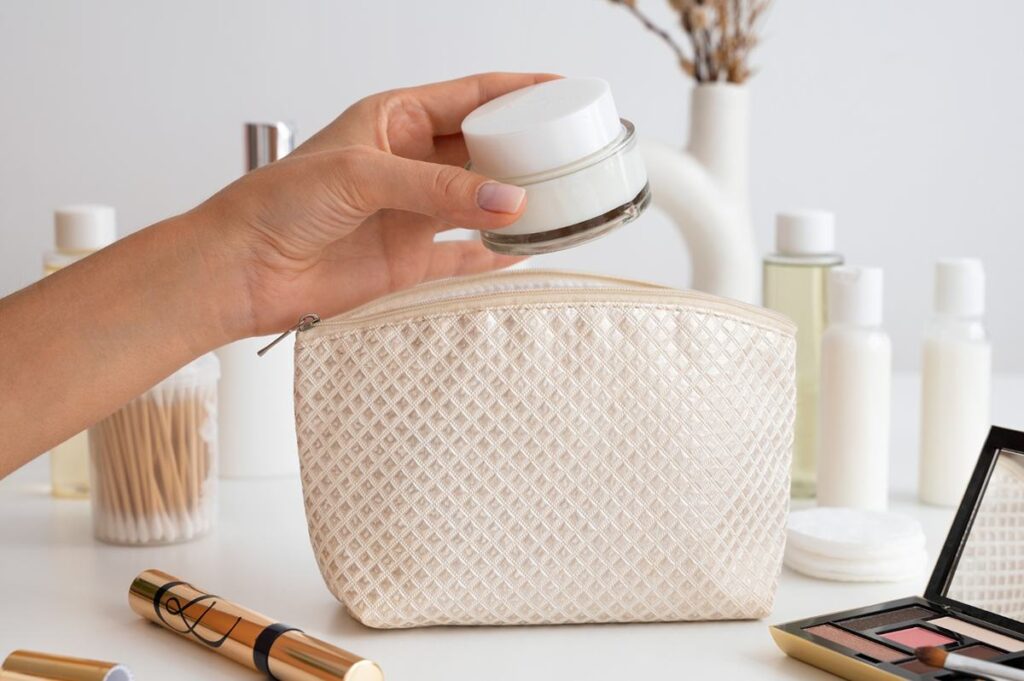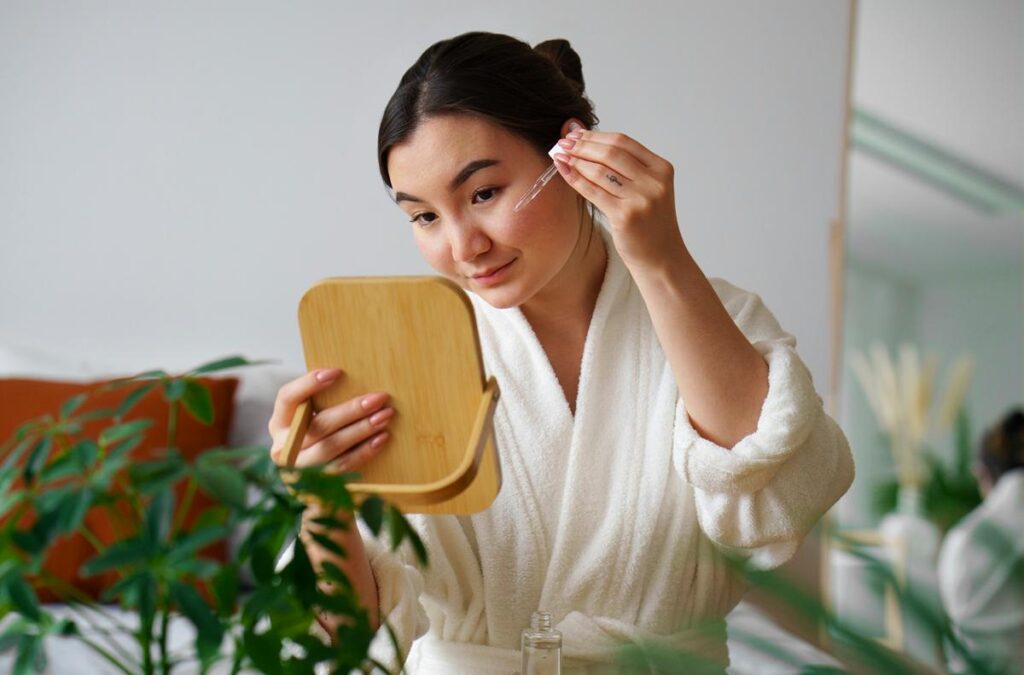Korean skin care is famous worldwide for its gentle yet effective approach to achieving glowing, healthy skin. The 10-step Korean skin care routine is designed to deeply cleanse, hydrate, and nourish the skin, helping to prevent early signs of aging and improve overall skin texture. Unlike harsh treatments, this routine focuses on hydration, protection, and layering lightweight products for the best results.
What is the 10-Step Korean Skin Care Routine?
The 10-step Korean skin care routine is a carefully designed method to achieve healthy, glowing skin by focusing on deep cleansing, hydration, and protection. Unlike quick fixes, this routine works by nourishing the skin layer by layer, helping to prevent damage before it starts.
Why Does It Work?
Korean beauty follows the principle of hydration, prevention, and consistency. Instead of using harsh treatments, it relies on lightweight products that work together to improve skin health over time.
Benefits of the 10-Step Routine:
Deeply cleanses the skin to remove dirt, oil, and impurities.
Prevents early signs of aging by keeping the skin hydrated.
Helps with acne, dullness, and uneven skin tone.
Strengthens the skin barrier to protect against pollution and sun damage.
Step-by-Step Guide to the 10-Step Korean Skin Care Routine

1. Oil-Based Cleanser
An oil-based cleanser is the first step in Korean skin care. It melts away makeup, sunscreen, and excess sebum, making it essential for a deep cleanse. Oil attracts oil, so it helps remove dirt and impurities without stripping the skin.
Common Mistakes:
Using the wrong type of oil for your skin (e.g., coconut oil may clog pores).
Not rinsing properly, leaving behind residue.
Skipping this step if you have oily skin (oil cleansers actually help balance sebum!).
Best Oil Cleansers for Each Skin Type:
- Dry skin: Jojoba or olive oil-based cleansers.
- Oily skin: Lightweight oils like grapeseed or tea tree oil-based cleansers.
- Sensitive skin: Fragrance-free and gentle formulas with squalane.
2. Water-Based Cleanser
A water-based cleanser removes leftover dirt, sweat, and oil, ensuring a completely clean base. This step is called double cleansing, and it’s key to preventing breakouts and clogged pores.
Foam vs. Gel Cleansers:
- Foam cleansers: Good for oily and acne-prone skin but may be drying.
- Gel cleansers: Best for dry and sensitive skin as they cleanse without irritation.
Mistakes to Avoid:
Using a harsh, stripping cleanser.
Over-cleansing, which can damage the skin barrier.
3. Exfoliation
Exfoliation removes dead skin cells, making skin look brighter and smoother. It also helps serums and moisturizers absorb better.
Best Exfoliating Ingredients:
AHA (Alpha Hydroxy Acid): Good for dry skin, reduces fine lines.
BHA (Beta Hydroxy Acid): Ideal for acne-prone, oily skin.
PHA (Poly Hydroxy Acid): Best for sensitive skin; gently exfoliates without irritation.
How Often to Exfoliate?
- Oily skin: 2–3 times a week.
- Dry skin: 1–2 times a week.
- Sensitive skin: Once a week.
4. Toner
Toner restores the skin’s pH balance and prepares it to absorb the next products. Unlike harsh Western toners, Korean toners hydrate and soothe the skin.
Best Toners for Different Skin Types:
- Hydration: Hyaluronic acid-based toners.
- Acne-prone skin: Toners with centella or green tea.
- Dry skin: Toners with glycerin or rose water.
5. Essence
Essence is the heart of Korean skin care. It hydrates, nourishes, and improves skin texture by delivering active ingredients deep into the skin.
How is Essence Different from Serum or Toner?
- Toner: Prepares the skin.
- Essence: Hydrates and strengthens the skin.
- Serum: Targets specific concerns like acne or wrinkles.
Best Korean Essences:
Snail mucin essence – hydrates and heals.
Galactomyces essence – brightens and evens out skin tone.
6. Serum/Treatment
Serums are powerful treatments that target specific skin concerns like dark spots, acne, or wrinkles.
Choosing the Right Serum for Your Skin Concern:
- Vitamin C – Brightens skin and fades dark spots.
- Hyaluronic Acid – Hydrates deeply for plumper skin.
- Niacinamide – Controls oil and reduces redness.
- Retinol – Reduces fine lines and wrinkles.
7. Sheet Mask
Sheet masks flood the skin with hydration and nutrients, making skin instantly plumper and brighter.
How Often to Use?
- For dry skin: 3–4 times a week.
- For oily skin: 1–2 times a week.
- For sensitive skin: Once a week.
Best Sheet Masks for Each Skin Type:
- Glowing skin: Masks with pearl extract or rice water.
- Acne-prone skin: Tea tree or charcoal masks.
- Dry skin: Aloe vera or honey-infused masks.
8. Eye Cream
The under-eye area is delicate and prone to dark circles, puffiness, and wrinkles. Eye creams hydrate and protect this sensitive skin.
Common Mistakes:
Rubbing instead of gently tapping the product.
Applying too much – a pea-sized amount is enough.
Best Eye Creams for Specific Concerns:
- Dark circles: Vitamin C or caffeine-based eye creams.
- Puffiness: Green tea or peptide-rich creams.
- Wrinkles: Retinol or collagen-infused eye creams.
9. Moisturizer
A moisturizer locks in all the previous steps, keeping skin soft and hydrated.
Choosing the Right Moisturizer:
- For oily skin: Gel-based, lightweight formulas.
- For dry skin: Thick, creamy moisturizers with ceramides.
- For combination skin: Balancing formulas with niacinamide.
10. Sunscreen
Sunscreen is the most important step in Korean skin care. It prevents sun damage, aging, and dark spots.
Chemical vs. Physical Sunscreen:
- Chemical sunscreens: Absorb UV rays, feel lightweight.
- Physical sunscreens: Reflect UV rays, great for sensitive skin.
Additional Korean Skin Care Tips for Best Results

Following the 10-step Korean skin care routine is great, but small details can make a big difference in getting glowing, healthy skin. Here are some extra tips to maximize your results!
1. Double Cleansing at Night vs. Morning Cleansing
Korean beauty experts swear by double cleansing at night to remove dirt, sunscreen, and makeup. But what about the morning?
Night Cleansing:
Start with an oil cleanser to remove makeup, sunscreen, and excess oil.
Follow with a water-based cleanser to clean sweat and dirt.
This step ensures your skin is fresh and ready to absorb skincare products.
Morning Cleansing:
If you have oily skin, use a gentle water-based cleanser to remove overnight oil buildup.
For dry or sensitive skin, rinsing with just lukewarm water is enough to avoid over-drying.
How to Layer Products Correctly for Maximum Absorption
Applying products in the right order ensures they work effectively. The golden rule is: apply from thinnest to thickest consistency.
Step-by-Step Layering Guide:
Toner – Prepares the skin and restores pH balance.
Essence – Hydrates and preps the skin for serums.
Serum/Treatment – Delivers targeted ingredients (Vitamin C, Retinol, Niacinamide).
Sheet Mask (optional) – Use 2-3 times a week for an extra hydration boost.
Eye Cream – Apply gently using your ring finger.
Moisturizer – Locks in hydration and seals all previous steps.
Sunscreen (morning only) – The most important step to protect from UV damage.
Avoiding Common Skin Care Mistakes
Even the best routine won’t work if you make these mistakes:
Over-Exfoliating – Exfoliating too often can damage the skin barrier, causing redness and irritation. Stick to 2-3 times a week max.
Skipping Sunscreen – UV rays cause wrinkles, dark spots, and premature aging. Always use SPF 30 or higher, even on cloudy days.
Using Too Many Actives at Once – Mixing retinol, Vitamin C, and exfoliants can irritate your skin. Introduce new products slowly.
Applying Products on Dry Skin – Toners, serums, and moisturizers absorb better when applied on slightly damp skin.
Not Changing Pillowcases Regularly – Dirty pillowcases trap oil and bacteria, leading to breakouts. Change them every 3-4 days.
Best Korean Skin Care Products for Beginners

Starting a Korean skin care routine can feel overwhelming, especially with so many products available. To help, here’s a list of affordable yet effective Korean skin care products that are perfect for beginners.
Affordable & Effective Korean Skin Care Products
Step 1: Oil-Based Cleanser – The Face Shop Rice Water Bright Cleansing Oil
Why? Gently removes makeup and sunscreen without clogging pores.
Step 2: Water-Based Cleanser – COSRX Low pH Good Morning Gel Cleanser
Why? Mild and non-stripping, perfect for all skin types.
Step 3: Exfoliator – Some By Mi AHA BHA PHA 30 Days Miracle Toner
Why? Removes dead skin, unclogs pores, and brightens dull skin.
Step 4: Toner – Isntree Green Tea Fresh Toner
Why? Hydrates and balances oil production, great for oily & combination skin.
Step 5: Essence – Missha Time Revolution First Treatment Essence
Why? Hydrates, repairs, and preps skin for better absorption of serums.
Step 6: Serum/Treatment – Beauty of Joseon Glow Serum (Propolis + Niacinamide)
Why? Brightens skin, fades dark spots, and controls acne.
Step 7: Sheet Mask – Mediheal NMF Aquaring Ampoule Mask
Why? Provides deep hydration and soothes irritated skin.
How to Customize the 10-Step Korean Skin Care Routine for Your Skin Type
Not all skin types need every step. Here’s how to adjust the routine based on your skin’s needs and which steps you can skip.
Adjusting for Your Skin Type
Dry Skin: Focus on hydrating cleansers, rich moisturizers, and serums with hyaluronic acid. Limit exfoliation to once a week.
Oily Skin: Use lightweight, oil-free products and chemical exfoliants (AHA/BHA) to control oil. Opt for gel-based moisturizers instead of creams.
Combination Skin: Use different products for different areas—a lightweight moisturizer for the oily T-zone and a richer one for dry areas.
Sensitive Skin: Choose fragrance-free, soothing ingredients like Centella Asiatica. Skip strong exfoliants and harsh actives.
Which Steps You Can Skip (If Needed)
All Skin Types: Exfoliation (if skin is sensitive), essence (if using a hydrating serum), sheet masks (not essential daily).
Oily Skin: Heavy creams—stick to gel-based moisturizers.
Dry Skin: Foaming cleansers—use a creamy one instead.
Sensitive Skin: Exfoliants and strong actives—focus on soothing and hydrating products.
Common Myths About Korean Skin Care
Korean skin care is widely popular, but many myths surround it. Let’s clear up some common misconceptions!
Myth 1: More Steps Mean Better Skin
Many believe that following all 10 steps guarantees flawless skin, but that’s not true. Skin care should be personalized. Some people see great results with just 4-5 essential steps (cleansing, moisturizing, sunscreen, and a serum). Using too many products can overwhelm the skin, leading to irritation and breakouts.
Myth 2: Korean Skin Care is Only for Women
Skin care isn’t just for women—men’s skin also needs hydration, protection, and nourishment. In fact, men often have oilier skin and larger pores, making cleansing, exfoliation, and lightweight hydration even more important. Many Korean brands offer gender-neutral products suitable for all skin types.
FAQs
1. What are the 10 steps in Korean skin care?
The 10 steps include oil cleanser, water cleanser, exfoliator, toner, essence, serum, sheet mask, eye cream, moisturizer, and sunscreen for glowing skin.
2. What is the 10 basic skin care routine?
It’s a layered approach focusing on cleansing, hydration, and protection, designed to nourish and improve skin health over time.
3. What is the Korean beauty 7 skin method?
It’s a hydration technique where you apply 7 layers of toner to deeply moisturize and plump the skin without making it greasy.
4. How to achieve Korean skin?
Follow a consistent skin care routine, focus on hydration, sun protection, and gentle products, and maintain a healthy diet.
5. How to get 100% clear skin?
Use gentle cleansers, exfoliate regularly, hydrate well, apply sunscreen daily, and avoid harsh products that irritate the skin.
6. Can I follow the Korean skin care routine if I have acne?
Yes, but choose non-comedogenic, lightweight products and avoid heavy oils or harsh exfoliants that can trigger breakouts.
7. Do I need to do all 10 steps every day?
No, some steps like exfoliation and sheet masks can be done 2-3 times a week, while cleansing, moisturizing, and sunscreen should be daily.
8. How long does it take to see results?
With consistent use, you may see hydration and glow in a week, but major improvements in texture and tone take 4-8 weeks.
Conclusion
The 10-step Korean skin care routine is designed to deeply cleanse, hydrate, and protect the skin, helping you achieve a healthy and glowing complexion. Each step plays a key role, from double cleansing to moisturizing and sun protection, ensuring your skin gets the best care.If following all 10 steps feels overwhelming, start step-by-step, focusing on the essentials like cleansing, moisturizing, and sunscreen. As your skin adapts, you can add more steps based on your needs. Remember, consistency is the secret to great skin.














